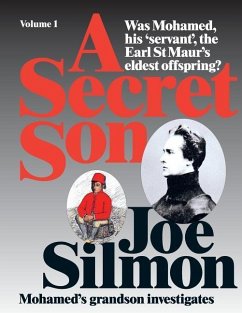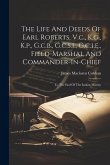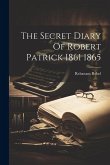In 1979, the author began a pre-"Roots"-style search for the origins of his Moroccan grandfather, Mohamed. The man who brought him to England, as his 'servant' aged about 12, was Lord St. Maur, of the noble House of Seymour, son of the Twelfth Duke of Somerset and of Lady Jane Georgiana Sheridan (granddaughter of R.B. Sheridan), and a leading beauty of that time. A tiny portrait of a little Moorish boy, painted at Bulstrode Park, principal seat of the Seymours in the 1860s, and his eventual Naturalisation dossier, brought all the necessary clues. Joe found the Earl to be an even more fascinating subject and thus began a much deeper search. This is the Earl St. Maur's encyclopaedic biography. However, the two characters being inextricably linked, demanded, at least, a chapter on Mohamed, son of Fatima, a Berber kabylwoman of Tetouan, and allegedly a mystery white man in the 1850s, while Lord St. Maur was on his way to the Persian War, via Morocco. There are chapters, too, on two illegitimate children by the Earl and a gypsy kitchen-maid, Rosina Swann, whom he took to Morocco in 1866 disguised as a young man. The first product of this couple, also Moroccan-born, Ruth St. Maur, eventually brought the dukedoms of Portland and Somerset together, became an ardent Suffragist, champion of the poor, sick and downtrodden, while bearing the next two dukes of Portland and straddling two entirely different worlds. She recounted her parents romantic stay in Morocco to socialist friends, including the Pankhursts, Keir Hardie and George Bernard Shaw, thus inspiring "Pygmalion" and eventually "My Fair Lady". Ruth's brother, British-born Richard Harold St. Maur, rose to Major in the British Army, a hero of Gallipoli, and bearer of the Croix de Guerre and Légion d'Honneur, for his liaison work in WWI. He eventually petitioned before the Committee for Privileges for the title of Sixteenth Duke of Somerset, but failed to prove that his parents had married, despite one Jacob Ravesteyn, a Dutch settler, purporting to have witnessed their marriage. Jacob also earns an entire chapter. The Earl St. Maur shunned pre-ducal protocol and parliamentary duties. He was a consummate warrior, balloonist, amateur early-007 style spy for Britain, code-breaker, multi-linguist, passionate lover, secret family man, unmarried father of perhaps [?] yet another male---Mohamed; if so, the first of the three. The others were officially recognised St. Maurs; but Mohamed had brown skin, and wasn't. That said, he was the Earl's constant companion and was much loved and cared for by the St. Maurs. Joe always wondered why, and needed to find out more, perhaps even through DNA. As Lord Seymour, "Ferdy" fought heroically, using pseudonyms, alongside great contemporary generals, and forever at the centre of the action, yet merely as a civilian volunteer, often mentioned in despatches. In the Persian War and in the Indian Mutiny, he was Lord Seymour, but in Italy, under Dictator Garibaldi, he became Captain Richard Sarsfield, while on his amorous Moroccan escapade with Rosina, the couple, once Rosina had discarded male attire for maternity reasons, the couple were known as Captain and Mrs. Graham. Even the untimely death of the Earl at the age of 34, in Dover Street, Mayfair in late 1869, where Ferdy had first taken Rosina, to train her as a "lady" in 1866, brought drama to the very end, when the Duke and Duchess of Somerset accused Surgeon Dr. Charles Williams, MD, of causing their son's death because of a badly handled tracheotomy. Pamphlets were exchanged and the Times eventually carried the accusers' retraction. The case forms the basis of the final chapter. It was the saddest of deaths; this lovable hero deserved better! Authors Sir John Colville, Lady Margaret Graubard and Brian Masters, cover some aspects of Earl St. Maur, in passing; however, this is his first actual biography.
Hinweis: Dieser Artikel kann nur an eine deutsche Lieferadresse ausgeliefert werden.
Hinweis: Dieser Artikel kann nur an eine deutsche Lieferadresse ausgeliefert werden.








